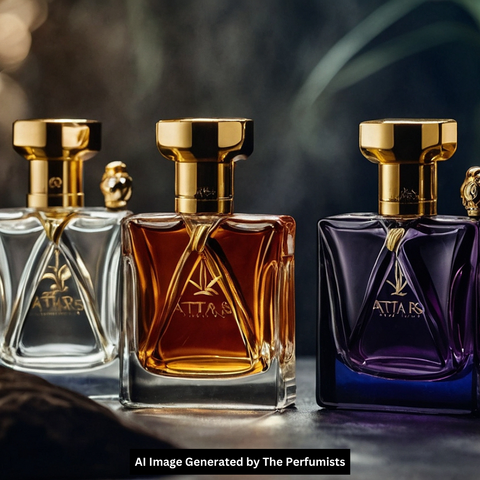How Are Attars Different From Traditional Perfumes?

Attars and traditional perfumes both serve the purpose of adding fragrance to one's body or surroundings, but they differ significantly in their composition, production methods, and cultural significance. In this guide, we'll explore the distinctions between attars and traditional perfumes, shedding light on their unique characteristics and uses.

Attars: The Essence of Tradition
Attar perfumes, also known as ittars or itr, have a rich history steeped in tradition and culture, particularly in Eastern societies. Originating from the Persian word 'ittar,' meaning scent, attars have been crafted and cherished for centuries, valued for their intricate blends and long-lasting fragrances.
Production Process:
The production of attars involves meticulous and time-honored methods, often passed down through generations. It typically begins with the extraction of aromatic compounds from natural materials such as flowers, herbs, spices, and woods. Traditional techniques like steam distillation, hydro-distillation, and cold pressing are employed to capture the essence of these botanicals. One distinguishing feature of attars is the use of sandalwood oil or another carrier oil as a base, which serves to enhance the fragrance and longevity of the final product.
Composition:
Attar perfumes are renowned for their complex and multi-layered compositions, blending various natural ingredients to create unique fragrances. These ingredients can include floral essences like rose, jasmine, or lavender, as well as spices, resins, and musk. The careful combination of these elements results in nuanced scents that evolve over time, offering a sensory journey with each application.
Cultural Significance:
In many Eastern cultures, attar perfumes hold a special place in traditions, rituals, and daily life. They are often used in religious ceremonies, weddings, and other celebrations, where their fragrances play a symbolic role in enhancing the atmosphere and invoking spiritual experiences. Additionally, attars are valued for their therapeutic properties and are used in traditional medicine practices for their healing benefits.

Traditional Perfumes: A Modern Approach
Traditional perfumes, often referred to simply as perfumes or colognes, represent a more contemporary approach to fragrance creation. While they may draw inspiration from natural ingredients, they are typically formulated using synthetic compounds to achieve specific scents and consistency.
Production Process:
The production of traditional perfumes involves a combination of synthetic and natural ingredients, carefully selected and blended to achieve desired fragrances. Modern techniques such as solvent extraction and chemical synthesis are commonly used to create aromatic compounds that mimic the scent of natural materials. Unlike attar perfumes, traditional perfumes do not necessarily use a base oil, as the fragrance itself is the primary focus.
Composition:
Traditional perfumes are known for their wide range of scents, from floral and fruity to woody and oriental. While some perfumes may contain natural essences, the majority of their fragrance components are synthetic compounds designed to replicate specific smells. These synthetic ingredients offer greater stability and consistency compared to natural extracts, allowing perfumers to create complex and long-lasting scents.
Cultural Significance:
Traditional perfumes have become ubiquitous in modern society, enjoyed by people around the world for their ability to enhance personal style and evoke memories. They are often associated with luxury, glamour, and self-expression, reflecting individual tastes and preferences. While they may not hold the same cultural significance as attars in Eastern traditions, perfumes play an important role in contemporary lifestyles, from special occasions to everyday wear.
Comparison Table:
Here's a comparison table summarizing the differences between attars and traditional perfumes:
|
Feature |
Attars |
Traditional Perfumes |
|
Production Methods |
Traditional techniques like steam distillation and cold pressing |
Modern techniques such as solvent extraction and chemical synthesis |
|
Composition |
Blend of natural ingredients, often with a base oil |
Combination of synthetic and natural compounds |
|
Longevity |
Long-lasting fragrance that evolves over time |
Stable and consistent scent profile |
|
Cultural Significance |
Rooted in Eastern traditions and rituals |
Associated with luxury, glamour, and self-expression |
Conclusion:
In conclusion, while attar perfumes and traditional perfumes both offer aromatic experiences, they differ in their production methods, compositions, and cultural significance. Whether you're drawn to the timeless allure of attars or the modern sophistication of traditional perfumes, each offers its own unique charm and sensory journey.